Ancient Rome
Ancient Rome was a civilization that began as a small settlement in Italy and grew into an empire that covered much of Europe, North Africa, and the Middle East. It was a powerful and influential civilization that made significant contributions to art, architecture, engineering, law, and government.
Timeline of Ancient Rome
- 753 BCE: According to legend, Rome was founded by Romulus and Remus.
- 509 BCE: The Roman Republic is established, leading to a period of expansion and conquest.
- 27 BCE: The Roman Empire is established with Augustus as the first emperor.
- 476 CE: The Western Roman Empire falls, marking the end of ancient Rome.
Government and Society
Ancient Rome had a complex system of government and a stratified society.
Government
- Monarchy: Rome was initially ruled by kings.
- Republic: Power shifted to the Senate and elected magistrates, creating a republican form of government.
- Empire: The transition to empire began with Augustus, who became the first Roman emperor.
Society
- Patricians: Wealthy landowners and aristocrats.
- Plebeians: Commoners and the working class.
- Slaves: Enslaved individuals who performed various roles in Roman society.
Art and Architecture
Ancient Rome is known for its impressive art and architecture, much of which still stands today.
Architecture
Roman architecture included the use of arches, domes, and concrete, leading to the construction of aqueducts, amphitheaters, and the famous Colosseum.
Art
Roman art encompassed a wide range of styles, from realistic portraiture to intricate mosaics and frescoes.
Engineering and Infrastructure
Roman engineering and infrastructure were highly advanced for their time.
Engineering
- Roads: The Romans built an extensive network of roads, enabling efficient travel and trade.
- Aqueducts: These impressive structures transported water to cities and towns, showcasing Roman engineering prowess.
Law and Government
Ancient Rome made significant contributions to the development of law and government systems.
- Twelve Tables: The earliest known legal code of ancient Rome, providing insights into Roman society and legal practices.
- Senate: A governing body with significant influence in Roman politics and decision-making.
Study Guide
- Describe the transition from the Roman Republic to the Roman Empire.
- Discuss the social structure of ancient Rome, including the roles of patricians, plebeians, and slaves.
- Explain the significance of Roman architecture and provide examples of famous Roman structures.
- What were the key engineering achievements of ancient Rome, and how did they impact the civilization?
- Explore the influence of Roman law and government on modern legal and political systems.
By studying the civilization of ancient Rome, we gain insights into the foundations of Western civilization and the enduring impact of Roman culture on the world.
[Ancient Rome] Related Worksheets and Study Guides:
.◂Earth Science Worksheets and Study Guides High School. Rocks I
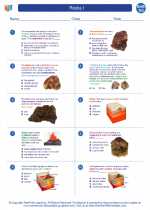
 Worksheet/Answer key
Worksheet/Answer key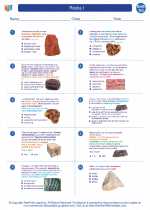
 Worksheet/Answer key
Worksheet/Answer key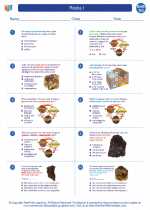
 Vocabulary/Answer key
Vocabulary/Answer key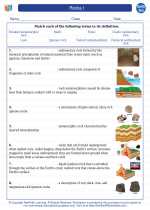
 Vocabulary/Answer key
Vocabulary/Answer key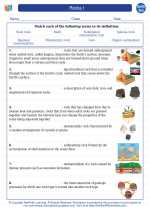
 Vocabulary/Answer key
Vocabulary/Answer key
